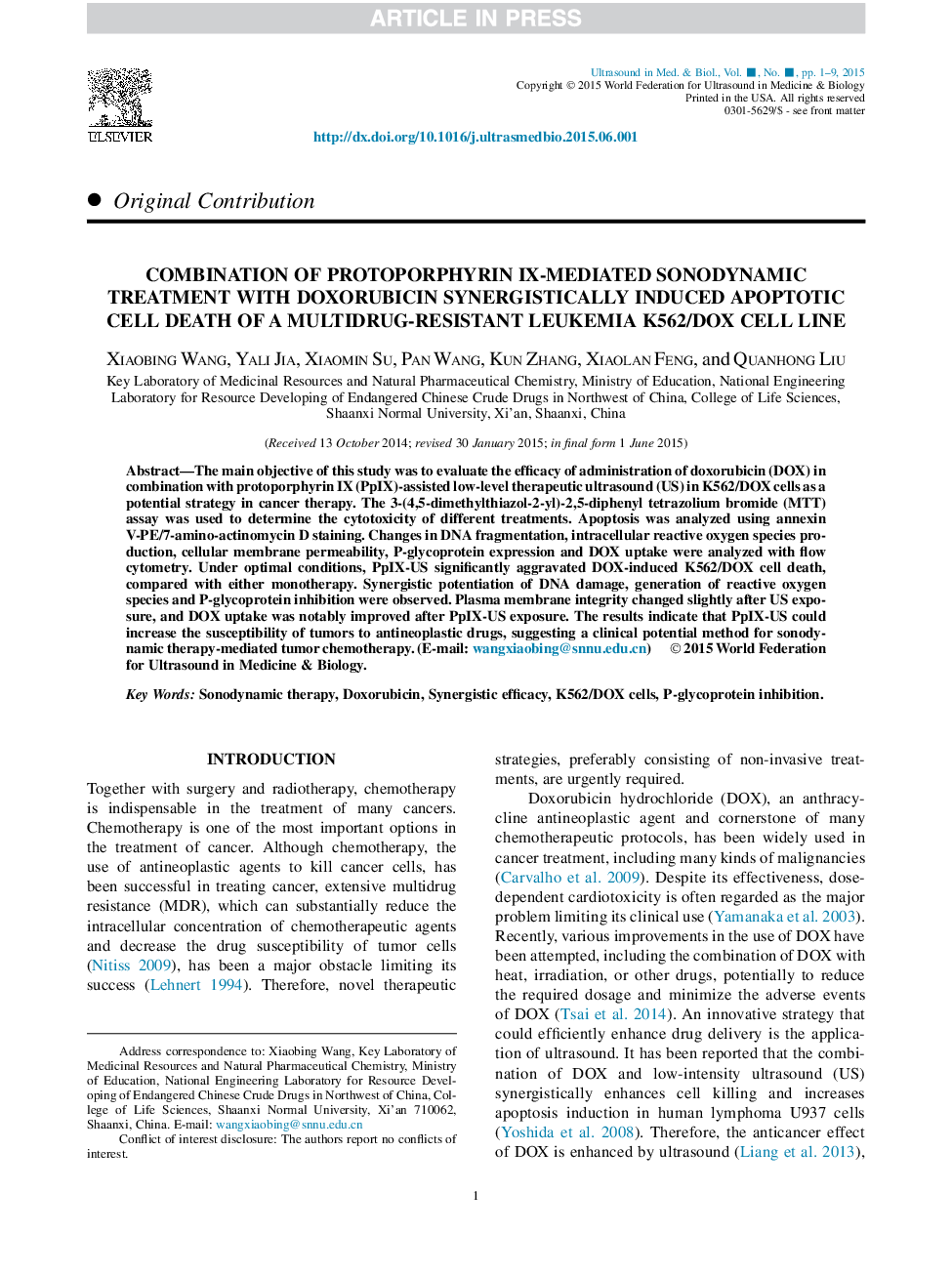| Article ID | Journal | Published Year | Pages | File Type |
|---|---|---|---|---|
| 1760462 | Ultrasound in Medicine & Biology | 2015 | 9 Pages |
Abstract
The main objective of this study was to evaluate the efficacy of administration of doxorubicin (DOX) in combination with protoporphyrin IX (PpIX)-assisted low-level therapeutic ultrasound (US) in K562/DOX cells as a potential strategy in cancer therapy. The 3-(4,5-dimethylthiazol-2-yl)-2,5-diphenyl tetrazolium bromide (MTT) assay was used to determine the cytotoxicity of different treatments. Apoptosis was analyzed using annexin V-PE/7-amino-actinomycin D staining. Changes in DNA fragmentation, intracellular reactive oxygen species production, cellular membrane permeability, P-glycoprotein expression and DOX uptake were analyzed with flow cytometry. Under optimal conditions, PpIX-US significantly aggravated DOX-induced K562/DOX cell death, compared with either monotherapy. Synergistic potentiation of DNA damage, generation of reactive oxygen species and P-glycoprotein inhibition were observed. Plasma membrane integrity changed slightly after US exposure, and DOX uptake was notably improved after PpIX-US exposure. The results indicate that PpIX-US could increase the susceptibility of tumors to antineoplastic drugs, suggesting a clinical potential method for sonodynamic therapy-mediated tumor chemotherapy.
Related Topics
Physical Sciences and Engineering
Physics and Astronomy
Acoustics and Ultrasonics
Authors
Xiaobing Wang, Yali Jia, Xiaomin Su, Pan Wang, Kun Zhang, Xiaolan Feng, Quanhong Liu,
